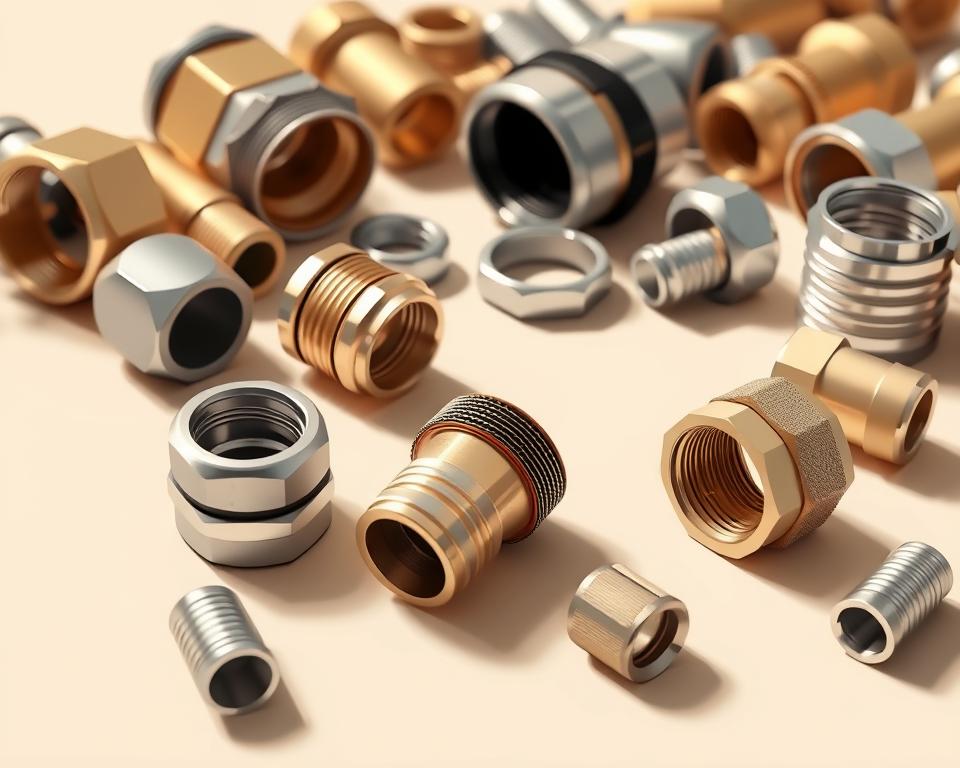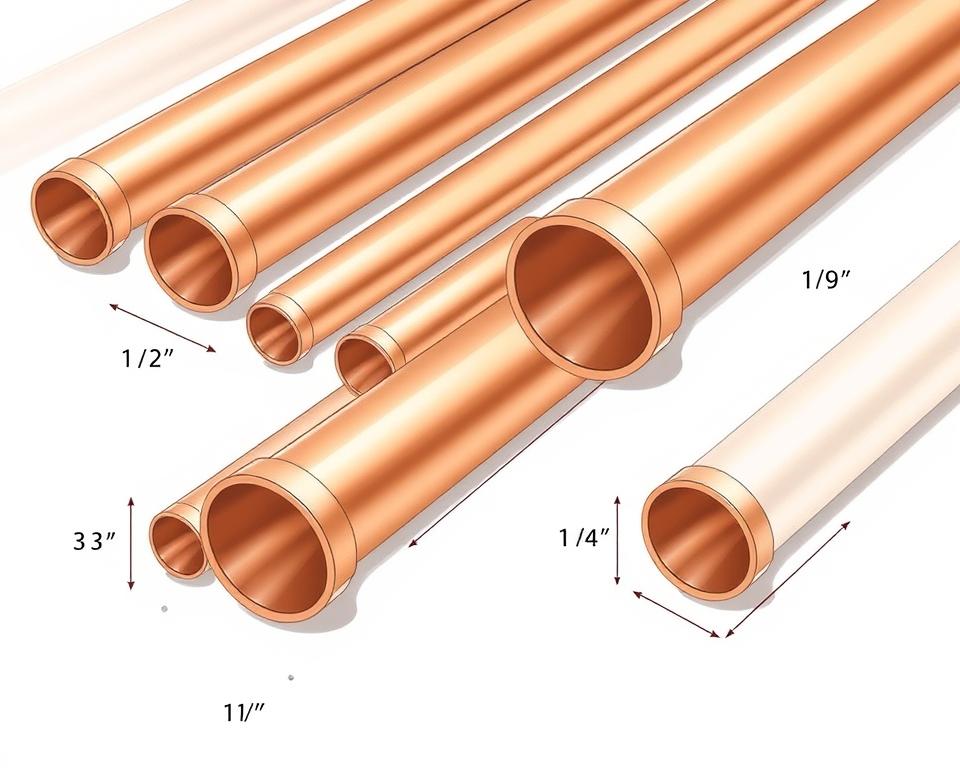Enhance with Fiber to the Home Cable Manufacturing Technology
Did you know that the demand for fiber optic cables is expected to attain $11.8 billion by 2025? With the rising need for high-speed and reliable internet connectivity, fiber optic manufacturing is essential in fulfilling this demand. To stay on top of the rivals and maintain efficient production, it’s necessary to optimize your production line with advanced fiber draw tower technology.
Key Takeaways:
- Elevate your network with high-speed, efficient FTTH cable production line technology.
- Invest in advanced solutions for top-rated fiber optic manufacturing.
- Keep up the competition by optimizing your production line with advanced FTTH cable technology.
Introduction to FTTH Technology and Its Importance
FTTH (Fiber to the Home) technology is a innovative solution that allows the delivery of high-speed internet and other communication services straight to homes and businesses. In today’s modern world, dependable and high-speed internet connectivity is vital for individuals and businesses equally. FTTH technology offers ultra-fast internet connections that can accommodate bandwidth-intensive applications, changing how we use and utilize the internet.
The significance of FTTH technology is due to its capability to offer a fiber optic network, which provides numerous benefits over traditional copper-based networks. Fiber optic cables use light signals to transmit data, facilitating speedier and more dependable internet connections. With FTTH technology, users can enjoy high-speed internet for streaming, gaming, video conferencing, and other bandwidth-demanding activities without encountering lag or interruptions.
FTTH technology plays a vital role in enabling the future of connectivity. As the demand for fast internet continues to soar, FTTH technology ensures that residences and businesses have the system necessary to meet these needs. Whether it’s online education, working from home, or utilizing cloud-based services, FTTH technology empowers individuals and organizations to make the most of the digital world.
In addition to to its advantages for individuals and businesses, FTTH technology also supports economic growth. Communities with reliable and high-speed internet are more appealing to businesses and investors. It facilitates the development of smart cities, IoT (Internet of Things) applications, and advanced communication systems that enhance productivity and quality of life.
Overall, FTTH technology is a revolution in the world of telecommunications. It offers the basis for high-speed, productive, and long-lasting networking, ensuring that individuals, businesses, and communities can thrive in the digital era.
Key Components of a Modern FTTH Cable Production Line
A modern FTTH cable production line consists of various key components that support the productive manufacturing of fiber optic cables. These elements include the fiber coloring machine, the SZ stranding line, and the fiber draw tower.
Fiber Coloring Machine
The fiber coloring machine is an important component of a contemporary FTTH cable production line. It adds color codes to the optical fibers, allowing for straightforward identification and organization. This guarantees smooth connectivity and makes easier the installation and maintenance process.
SZ Stranding Line
The SZ stranding line is essential in the production of fiber optic cables. It is used to bundle multiple fibers together, providing strength, flexibility, and protection. The SZ stranding technique enhances the performance and reliability of FTTH cables, enabling them to withstand external stresses and enable efficient data transmission.
Fiber Draw Tower
The fiber draw tower is another key element of a current FTTH cable production line. It is used to draw and extend the optical fibers to the preferred diameter. This process guarantees the uniformity and quality of the fibers, making them suitable for fast data transmission. The fiber draw tower is important for producing cables with optimal performance and minimal signal loss.
These components work together harmoniously to guarantee the seamless production of high-quality FTTH cables. The fiber coloring machine, SZ stranding line, and fiber draw tower are crucial for reaching efficient manufacturing processes and providing dependable connectivity options to meet the increasing demand for fast internet.
| Component | Function | Importance |
|---|---|---|
| Fiber Coloring Machine | Provides color codes to optical fibers for easy recognition and organization | Ensures seamless connectivity and makes easier installation and maintenance processes |
| SZ Stranding Line | Bundles multiple fibers together, providing strength, flexibility, and protection | Improves performance, reliability, and capacity to withstand external stresses |
| Fiber Draw Tower | Draws and extends fibers to required diameter for optimal performance | Guarantees uniformity, quality, and minimal signal loss in FTTH cables |
Advanced FTTH Cable Equipment for Boosted Performance
In order to achieve improved performance and reliability in FTTH cable production, it is essential to invest in advanced equipment. Advanced FTTH cable production line equipment utilizes cutting-edge technologies and novel designs to enhance production efficiency, reduce downtime, and produce premium cables. Upgrading your production line with the most recent developments in FTTH cable equipment will help you stay ahead the competition and meet the increasing demand for reliable fiber optic connectivity.
With cutting-edge FTTH cable equipment, you can:
- Optimize production efficiency
- Decrease downtime and increase productivity
- Produce premium cables that satisfy industry standards
- Enhance the performance and reliability of your fiber optic network
Investing in advanced FTTH cable equipment is an investment in the future of your business. By utilizing the newest technologies and designs, you can ensure that your production line is capable of fulfilling the demands of the rapidly evolving fiber optic manufacturing industry.
Stay at the forefront of the market and offer enhanced performance to your customers with cutting-edge FTTH cable equipment.
FTTH Cable Production Line: A Complete Overview
Explore a comprehensive overview of the FTTH cable production line, exploring the different stages involved in manufacturing fiber optic cables. From fiber preparation to cable sheathing, learn into each step of the production process, and understand the importance of precision and quality control in producing reliable FTTH cables.
Manufacturing fiber optic cables demands detailed attention to detail and compliance to rigorous quality control measures. Each stage of the production process is essential in guaranteeing the final product satisfies the highest standards of performance and reliability.
Here is a breakdown of the key stages involved in the FTTH cable production line:
- Fiber Preparation: The first step in the production process involves preparing the optical fibers that will be incorporated into the cables. This includes cleaning, polishing, and testing the fibers to guarantee they fulfill the required specifications.
- Fiber Coloring: Once the fibers are prepared, they undergo a fiber coloring machine. This machine adds color codes to the individual fibers, facilitating straightforward recognition and organization during cable assembly.
- Stranding: The colored fibers are then collected using an SZ stranding line. This process guarantees that the fibers are properly aligned and protected during cable assembly.
- Primary Coating: The gathered fibers are coated with a primary layer of protective material to provide mechanical strength and protect them from external factors such as moisture and temperature fluctuations.
- Secondary Coating: After the primary coating, the fibers pass through a secondary coating process. This additional layer offers further protection and boosts the durability of the cables.
- Cable Assembly: The coated fibers are then combined into a cable structure using specific equipment. This step entails meticulously placing the fibers, adding strength members, and applying an outer sheath for added protection.
- Testing and Quality Control: Throughout the production process, thorough testing and quality control measures are carried out to guarantee that the cables satisfy the required performance and reliability standards. This entails testing for attenuation, return loss, and mechanical strength, among other parameters.
css
By following these thorough production steps and upholding strict quality control, manufacturers can produce top-notch FTTH cables that deliver stable and high-performance connectivity. The ongoing advancements in FTTH cable production technology propel the industry forward, facilitating faster speeds, improved efficiency, and boosted network capabilities.
With a comprehensive overview of the FTTH cable production line, manufacturers can enhance their processes, ensure consistent quality, and meet the increasing demand for fiber optic connectivity solutions.
| Stage | Description |
|---|---|
| Fiber Preparation | Preparing the optical fibers through cleaning, polishing, and testing. |
| Fiber Coloring | Adding color codes to individual fibers for identification and organization. |
| Stranding | Gathering the colored fibers together using an SZ stranding line. |
| Primary Coating | Coating the fibers with a primary layer of protective material. |
| Secondary Coating | Applying an additional layer of coating to boost durability. |
| Cable Assembly | Assembling the coated fibers into a cable structure. |
| Testing and Quality Control | Rigorous testing to guarantee the cables meet performance standards. |
The Role of Fiber Secondary Coating Line in FTTH Manufacturing
The fiber secondary coating line is a crucial element in FTTH (Fiber to the Home) manufacturing, adding an additional layer of protection to the optical fibers. This secondary coating serves to boost the durability and mechanical strength of the cables, ensuring their longevity and resistance to external factors such as moisture and temperature fluctuations.
By applying a secondary coating, the fiber optic cables acquire increased protection against:
- Moisture: Preventing water ingress that could damage the optical fibers.
- Temperature fluctuations: Shielding the fibers from extreme heat or cold, preserving their performance.
- Mechanical stress: Protecting the fibers from bending or twisting that may occur during installation or use.
- Abrasion: Offering resistance against physical abrasion or potential damage due to rodents or other external forces.
By investing in a fiber secondary coating line, manufacturers can ensure the production of dependable and resilient FTTH cables. These cables provide fast and stable internet connectivity to homes and businesses, contributing to the expansion of broadband networks and satisfying the growing demand for stable communication services.
Automated Fiber Optic Cable Line: Optimizing Production
In the rapidly evolving world of fiber optic cable manufacturing, automation has emerged as a game-changer. By integrating automated fiber optic cable lines, manufacturers can revolutionize their production processes, enhance efficiency, and stay competitive the competition. In this section, we will explore the remarkable benefits of automation in fiber optic cable manufacturing and highlight the fast production techniques that can be attained through automation.
Benefits of Automation in Fiber Optic Cable Manufacturing
Automation offers numerous pros to the manufacturing of fiber optic cables. Here are some key pros:
- Increased Efficiency: Automated fiber optic cable lines enhance production processes, reducing manual labor and significantly improving efficiency. With automated equipment handling tasks such as cutting, stripping, and splicing, production speeds can be substantially boosted, leading to a higher output of cables.
- Reduced Labor Costs: By mechanizing repetitive tasks, manufacturers can reduce their reliance on manual labor, resulting in cost savings. This permits businesses to allocate resources more productively and invest in other areas of growth and innovation.
- Improved Product Consistency: Automation guarantees consistent quality control throughout the production process. By employing automated systems and technologies, manufacturers can reach precise measurements, accurate alignments, and standardized processes. This ultimately results in the production of consistent, dependable fiber optic cables.
High-Speed Fiber Optic Cable Production Techniques
In addition to the advantages mentioned above, automation facilitates manufacturers to utilize high-speed production techniques, catering to the constantly growing demand for fiber optic cables. Here are some key techniques:
- Parallel Processing: Automation allows for parallel processing of multiple cable components simultaneously. This technique substantially decreases production cycle times, allowing manufacturers to fulfill tight deadlines and satisfy customer demands more productively.
- Precision Splicing: Automated splicing machines can reach precise and rapid splicing of optical fibers, leading to faster and more reliable cable assembly. This technique guarantees optimal performance and minimizes potential signal loss.
- Real-Time Monitoring: Automated systems can monitor production processes in real-time, spotting and fixing any issues promptly. By continuously monitoring parameters such as cable tension, fiber alignment, and temperature, manufacturers can avoid production delays and preserve premium standards.
By utilizing automation in fiber optic cable manufacturing, businesses can achieve its full potential and reach unparalleled efficiency and productivity. Let’s delve deeper into the advancements in fiber optic cable equipment and the newest cutting-edge technology in the following sections.
Cutting-Edge Fiber Optic Production Technology
Keeping up with the latest innovations in fiber optic production technology is crucial for remaining competitive in the industry. Manufacturers are continually developing and developing new technologies to enhance efficiency and simplify production processes. Two key areas that have seen significant developments are compact fiber unit (CFU) designs and fiber ribbon line efficiency.
Advancements in Compact Fiber Unit (CFU) Designs
The compact fiber unit (CFU) is essential in fiber optic production, delivering a space-saving method that optimizes production efficiency. With innovative CFU designs, manufacturers can improve space utilization and decrease floor space requirements. These Fiber coloring machine units are developed to handle a higher number of fiber optic cables, enabling increased productivity without sacrificing quality.
In addition to to space optimization, CFU designs also emphasize straightforward accessibility and maintenance. They possess user-friendly interfaces and modular components that can be readily replaced or upgraded, reducing downtime and boosting overall operational efficiency.
Advancements in Fiber Ribbon Line Efficiency
The production of multiple fiber optic cables at once demands efficient processes. This is where developments in fiber ribbon line efficiency come into play. Manufacturers are constantly focused on boosting the technology and techniques employed in fiber ribbon lines to increase production capacity and decrease manufacturing time.
By enhancing the layout and design of fiber ribbon lines, manufacturers can attain higher productivity levels while maintaining product quality. This entails developments in ribbon splicing techniques, faster curing processes, and boosted automation to reduce manual intervention and human error.
Furthermore, developments in fiber ribbon line efficiency have also produced improvements in cable management and organization. With better cable routing and labeling systems, manufacturers can easily track and identify individual fiber cables, guaranteeing productive production and simplified operations.
By adopting state-of-the-art fiber optic production technology, including developments in compact fiber unit designs and advancements in fiber ribbon line efficiency, manufacturers can reach higher productivity, boosted efficiency, and superior quality in their fiber optic cable production processes.
Choosing the Optimal FTTH Cable Machinery for Your Needs
When it comes to optimizing your FTTH cable production line, selecting the right cable machinery is vital for reaching optimal results. To help you select correctly, let’s explore some premium cable production solutions that deliver advanced technologies, reliable performance, and adaptable options to satisfy your specific manufacturing needs.
Premium Cable Production Technologies
Investing in high-quality cable production methods can substantially improve the efficiency and productivity of your FTTH cable manufacturing process. These technologies are designed to simplify operations, reduce downtime, and deliver high-quality cables consistently. Whether you’re seeking fiber coloring machines, SZ stranding lines, or fiber draw towers, reputable manufacturers deliver a wide range of options to suit your needs.
By choosing a premium cable production technology, you can utilize innovative technologies that mechanize various production stages, ensuring precise and consistent results. These technologies also provide flexibility for customization, facilitating modify to different cable specifications and satisfy the evolving demands of the market.
Putting resources into Quality for Sustained Gains
Investing in quality machinery is crucial for future gains in your FTTH cable production. High-quality equipment not only boosts productivity but also guarantees the production of stable and durable cables. By utilizing machinery that fulfills strict quality standards, you can avoid costly downtime, decrease maintenance needs, and provide cables that surpass customer expectations.
When choosing FTTH cable machinery, assess the reputation and track record of the manufacturer. Select manufacturers that prioritize quality control measures, adhere to industry standards, and offer comprehensive support and maintenance services. By investing in quality machinery, you are committing to a sustained dedication to the success of your manufacturing operations and the satisfaction of your customers.
Table: Attributes to Assess when Choosing FTTH Cable Machinery
| Features | Benefits |
|---|---|
| Advanced Technologies | Improved production efficiency and consistent results |
| Customization Options | Flexibility to different cable specifications |
| Quality Control Measures | Boosted reliability and minimized downtime |
| Comprehensive Support and Maintenance | Sustained dedication to customer satisfaction |
Investing in quality machinery is a strategic decision that can advance your FTTH cable production line to new heights of efficiency, reliability, and customer satisfaction. By carefully considering your options and choosing reputable manufacturers, you can guarantee your sustained success in the competitive fiber optic manufacturing industry.
Maintaining Superior Standards in FTTH Cable Quality Control
Quality control is crucial in FTTH cable production to guarantee the delivery of reliable and superior cables. Maintaining superior standards in quality control is essential to meet customer expectations and uphold the reputation of your brand in the industry.
Various quality control measures and tests are used to evaluate the performance, durability, and reliability of FTTH cables. These tests include:
- Physical tests: Evaluating the cable’s tensile strength, flexibility, and resistance to environmental factors such as temperature and humidity.
- Optical tests: Verifying the cable’s optical performance, including signal loss, attenuation, and bandwidth capacity.
- Endurance tests: Subjecting the cables to extended periods of usage to evaluate their long-term reliability and durability.
- Evaluation of connectors and terminations: Checking the proper installation and functionality of connectors and terminations to maintain signal integrity.
By implementing thorough quality control protocols, you can spot any potential issues or defects early in the production process, decreasing the risk of cable failures and customer dissatisfaction. Regular audits and inspections should be carried out to monitor and ensure compliance with quality control standards.
Complying with superior standards in FTTH cable quality control not only helps in offering dependable and productive cables but also builds trust with customers. Providing reliable cables that consistently fulfill or exceed industry standards will enhance your reputation and produce future customer satisfaction and loyalty.
| Benefits of Superior Standards in Quality Control | Impact on Your Business |
|---|---|
| Provide reliable and superior FTTH cables | Enhanced customer satisfaction and loyalty |
| Minimize cable failures and costly repairs | Boosted reputation and brand image |
| Build trust with customers and stakeholders | Enhanced market competitiveness |
| Ensure compliance with industry standards and regulations | Minimized risk of liability and legal issues |
Investing in quality assurance and following high standards in FTTH cable quality control is essential for your success in the industry. By consistently providing dependable and high-performance cables, you can build your brand as a trusted provider of FTTH solutions and fulfill the rising demand for fast and reliable connectivity.
As a Final Point
In conclusion, improving your FTTH cable production line with cutting-edge technology is paramount to offering stable connectivity solutions. The demand for high-speed, efficient FTTH cables is rapidly growing, and maintaining a lead in the industry necessitates investing in high-quality equipment and keeping current with the latest developments.
By implementing innovative technology in your production line, you can boost your network and meet the needs of customers who rely on fast and dependable internet connections. This includes adding cutting-edge elements such as fiber coloring machines, SZ stranding lines, and fiber draw towers, which operate harmoniously to ensure the uninterrupted production of high-quality FTTH cables.
Furthermore, stringent quality control standards must be maintained throughout the production process to guarantee the delivery of reliable and top-performing cables. Investing in quality machinery and conducting stringent testing and evaluation can help build trust with customers and sustain your reputation in the industry.
Stay at the forefront of the FTTH cable production industry by embracing cutting-edge technology, investing in top-notch equipment, and adhering to rigorous quality control standards. By doing so, you can provide the stable connectivity options that customers require in today’s digital age.



